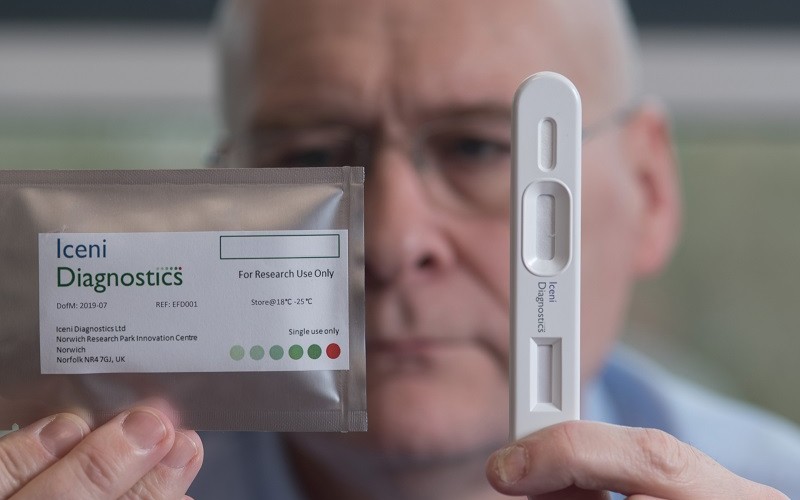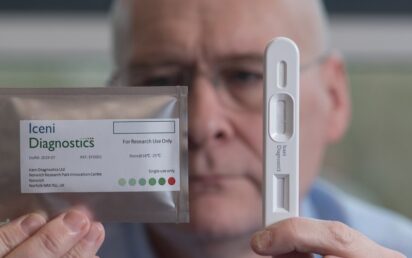The Norwich tech company behind a 15-minute test for COVID-19 has been backed with £2 million investment.
Iceni Diagnostics expects results from trials of its rapid lateral flow test – which works with nose and throat swabs or saliva – imminently
Resembling a pregnancy test in appearance, it identifies sugar molecules called glycans, which the virus needs to hook on to when infecting cells.
As each virus requires a different glycan or method of obtaining one, they can be identified. The Iceni test can detect the presence of COVID-19 as well as influenza, which has similar symptoms.
It features three lines which can light up in red. The first shows that the test has worked; the second if a strain of flu is present; and the third if the person has coronavirus.
Iceni Diagnostics, which was formed to develop carbohydrate-based therapeutics and point-of-care diagnostics for infectious diseases, is in advanced discussions with public sector and commercial buyers in the UK and the US, including Public Health England.
£1.3 million of seed capital from 35 angel and local enterprise investors has been made available, rising to a total confirmed commitment of up to £2 million payable in 2021. The firm will build out commercial infrastructure and expand its senior team.
“There’s a vast, global potential in the application of our unique technology,” said co-founder Prof Rob Field.
“We are using it to tackle COVID now, but it will also produce better vaccines and new diagnostic and therapeutic products in the future.
“The investment we have secured will enable us to attract new talent to the team at Iceni and maximise the significant opportunities we have in our pipeline.”
Investors include public sector co-investment fund New Anglia Capital and members of Anglia Capital Group.
Director of Anglia Capital Group Andrea Finegan said: “This was an opportunity to invest in a company with real potential to grow and to make an impact on therapeutics and diagnostics for a series of infectious diseases.”

